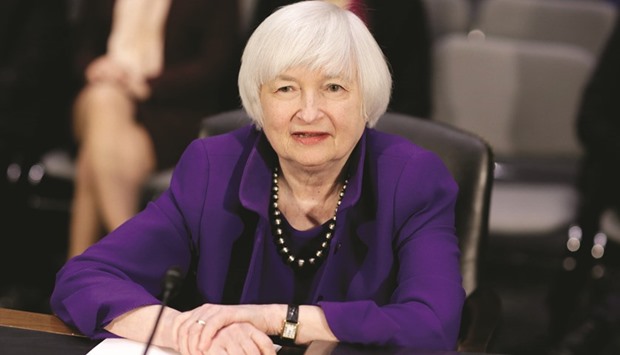Bond traders are calling the Federal Reserve’s bluff.
For weeks now, everyone from Janet Yellen to Fed newcomer Patrick Harker has been trying to jawbone investors into believing an interest-rate increase in March is on the table. That the meeting is “live.”
Yet try as they might, the bond market seems unconvinced there’s much behind the tough talk. With less than three weeks to go, traders see slightly more than a one-in-three chance the central bank raises rates. That’s well short of the 50% minimum that has predicated every rate hike in the past quarter-century, according to data compiled by Bianco Research.
Reasons for the scepticism are varied, but the one that stands out is the simple fact that Fed officials are running out of time to make their case. The February jobs report comes five days before Fed officials gather and inflation data will be released mere hours before their decision is announced. Both key metrics come out during the Fed’s public blackout period, which starts on March 4, leaving traders in the dark about the central bank’s intentions.
“The market recognises it has a veto over the Fed,” said Jim Bianco, a three-decade industry veteran whose research is followed by some of the biggest fixed-income managers. Because of the timing of the releases and the risk of whipsawing the market, “it might be too late at that point for them to do anything, even if we get eye-popping numbers.”
US Treasury yields have fallen this year as worries over faster inflation and bigger deficits under a Trump administration give way to a more tangible debate over the Fed’s interest-rate policy and jitters about the upcoming French election. The benchmark 10-year note has slid to 2.33%, down from 2.64% in mid-December.
Right now, the odds are decidedly against an increase in March. Futures traders are pricing in just a 40% probability, based on the assumption that the effective fed funds rate will trade at the middle of the new FOMC target range after the next hike. The last two times the Fed raised rates, in December 2015 and December 2016, the chances were 74% and 100%. Just one of the 23 bond dealers that trade with Fed are calling for higher rates next month.
“The Fed wants the market to believe March is live, but I don’t necessarily think that means they will tighten then,” said Clayton Triick, money manager at Angel Oak Capital Advisors, which oversees $5.5bn.
Fed officials said in minutes of their latest meeting that they can raise rates “fairly soon” if labour market and inflation data meet or exceed current expectations. But time and again, officials have shown that they want to be sure investors are ready for an increase before it actually happens.
“We certainly never want to surprise the markets,” Cleveland Fed President Loretta Mester told Bloomberg TV last week.
Since they began announcing their target for the Fed funds rate in 1994, a period encompassing 191 meetings, policy makers have never surprised traders by lifting rates when they were expecting the central bank to stay put, Bianco said. He looked at market-based expectations three weeks before each meeting and considers odds of 50% or more as pricing in a move.
Of course, the “bond markets can be wrong,” as Jeffrey Rosenberg, BlackRock’s chief fixed-income strategist, put it bluntly. But the window to change perceptions is closing fast. Yellen, the Fed chair, and Vice Chairman Stanley Fischer are both scheduled to speak on March 3, giving them each one last chance before the blackout period.
Recent figures on wage growth disappointed and the March calendar for economic releases is also working against the Fed. Not since January 2014 has the US announced jobs data so late into a month. And the central bank rarely pulls the trigger right after the release.
“The fact that the releases don’t come far enough in advance is going to be a problem” if the Fed really intends to tighten, said Michael Gapen, the head of US economics research at Barclays.
It’s not just March. The May 3 meeting comes between the first and second rounds of France’s presidential election, in which right-wing, anti-euro candidate Marine Le Pen is leading the polls. That’s heightening concern that geopolitical issues may once again hamstring the Fed. Last year, the Fed held off in June before the Brexit vote. China’s surprise yuan devaluation in 2015 also wreaked havoc with the central bank’s timetable.
Traders currently see a 63% likelihood of at least one rate increase by May. (If you were to strip out March, then odds for May would be lower.) The majority of dealers remain convinced the first hike won’t happen until June.
“I don’t think May is in play,” Paul Richards, the president of Medley Global Advisors, told Bloomberg TV last week. “They blinked last year. The French election, representing someone like Le Pen, is just too big.”
The May gathering is one of four each year that doesn’t have an accompanying news conference. The Fed began holding media briefings after every other meeting in 2011.

Yellen: Taking investors into confidence.

